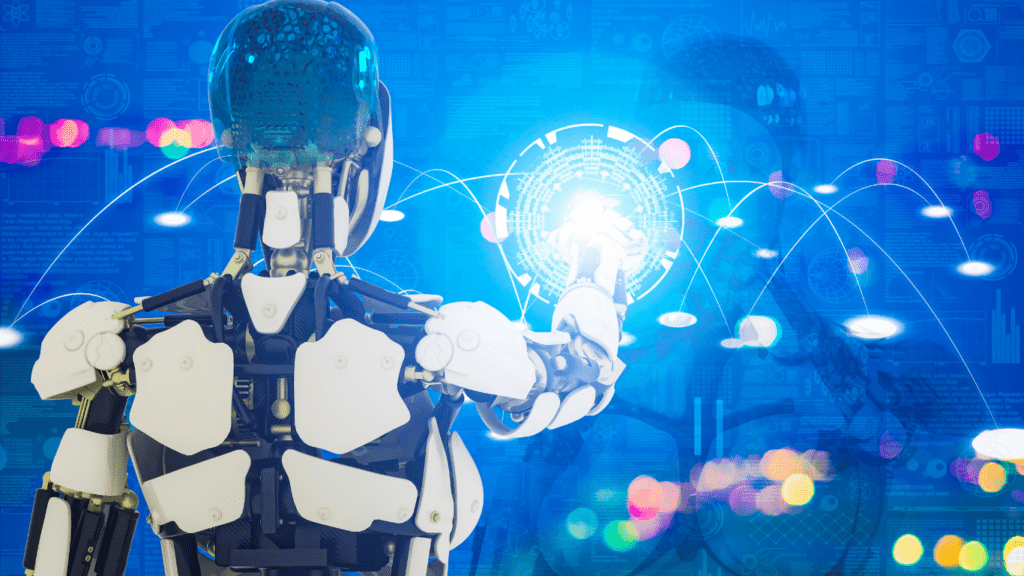The tech world never stands still, and as a developer, I know how crucial it is to stay ahead of the curve. Programming trends evolve rapidly, shaping the tools, languages, and frameworks we rely on every day. With 2025 on the horizon, it’s clear that the industry is gearing up for some transformative shifts.
From advancements in artificial intelligence to the rise of new coding paradigms, these trends aren’t just buzzwords—they’re redefining how we build, deploy, and scale software. Whether you’re a seasoned pro or just starting your coding journey, understanding these developments can give you a serious edge in your career. Let’s dive into what’s set to dominate the programming landscape and why it matters.
1. The Rise Of Artificial Intelligence And Machine Learning
Artificial intelligence (AI) and machine learning (ML) are driving transformative changes in software development. AI-powered tools streamline processes like:
- code generation
- debugging
- optimization
For example, GitHub Copilot and Amazon CodeWhisperer demonstrate how AI can assist developers by suggesting code snippets and enhancing productivity.
Machine learning frameworks like TensorFlow, PyTorch, and Scikit-learn are evolving rapidly. These frameworks simplify implementing predictive analytics, natural language processing, and computer vision into software applications. Developers familiar with these tools can leverage advanced ML algorithms to improve application functionality and user experience.
Deploying AI models efficiently is critical in 2025. Techniques like edge computing and federated learning enable real-time AI processing on devices, reducing latency. Platforms such as TensorFlow Lite and ONNX Runtime are optimizing AI model portability across devices, which is key for creating scalable, responsive applications.
Ethics in AI is another focus point. Developers integrate fairness, transparency, and accountability into AI systems to align with regulatory standards. Understanding concepts like bias detection, explainability, and ethical AI design is essential for building responsible applications.
AI and ML influence every industry. In finance, algorithms detect fraud and improve risk management. In healthcare, AI models assist in diagnostics and research. Staying updated with cutting-edge AI applications positions developers as invaluable contributors to any tech-driven industry.
2. Growth Of Serverless Computing
Serverless computing eliminates the need for developers to manage servers. It enables deploying applications where the cloud provider handles server management, scaling, and maintenance. Platforms like:
- AWS Lambda
- Google Cloud Functions
- Azure Functions
lead this space. This approach optimizes resource usage. Developers get billed based on execution times, rather than paying for idle infrastructure. Businesses benefit by reducing operational costs and improving scalability during peak workloads.
Serverless architecture supports rapid development cycles. Without backend management, I can focus solely on writing and refining code. For instance, developers can quickly integrate APIs or IoT applications with minimal overhead.
Event-driven programming thrives in serverless environments. Features like real-time data processing in applications such as chat systems or predictive analytics systems enhance user experiences.
The demand for skilled professionals in serverless computing rises as the adoption expands. Knowledge of frameworks like Serverless Framework or AWS SAM can help build, deploy, and optimize serverless applications with efficiency.
3. Expansion Of Edge Computing
Edge computing is transforming how data is processed and utilized. By enabling computation closer to the data source, edge computing reduces latency and enhances real-time processing capabilities. Industries like IoT, autonomous vehicles, and AR/VR are leveraging this trend to optimize performance and lower bandwidth usage.
Developers are integrating edge computing with AI to enable smarter devices. For example, AI algorithms are deployed on edge devices like cameras or sensors, allowing decisions to be made locally without relying on centralized servers. This approach boosts efficiency in scenarios requiring real-time responses, such as in smart homes or industrial automation.
Frameworks like AWS IoT Greengrass, Microsoft Azure IoT Edge, and Google Distributed Cloud are pivotal. These tools help developers build applications that leverage edge ecosystems while maintaining robust connectivity with cloud platforms. As edge computing adoption grows, understanding these frameworks is crucial to developing scalable, low-latency solutions.
Cybersecurity within edge ecosystems remains a priority, as data processed at the edge is vulnerable. Developers are focusing on implementing encryption protocols, secure device authentication, and compliance with data protection regulations to mitigate risks. Tools like EdgeX Foundry and Open Horizon assist in creating secure, reliable edge deployments.
Edge computing complements trends like 5G, which supports faster data transfer rates and increases edge device efficiency. This synergy expands possibilities for innovations in industries such as healthcare, where remote monitoring and diagnostics demand high-speed, low-latency setups. Developers staying ahead in edge computing trends can significantly impact these evolving sectors.
4. Adoption Of Multi-Cloud Strategies

Developers are increasingly embracing multi-cloud strategies to optimize flexibility and resilience in software deployment. This approach involves using multiple cloud service providers, such as AWS, Microsoft Azure, and Google Cloud, to distribute workloads and mitigate risks associated with relying on a single vendor. By diversifying across platforms, teams reduce downtime risks and enhance disaster recovery capabilities.
Security customization is another prominent benefit of multi-cloud adoption. Different providers offer unique tools for managing data encryption, identity access, and compliance with regulations like GDPR or HIPAA. Leveraging these distinct features enables developers to tailor security protocols to specific project requirements, ensuring robust data protection.
The multi-cloud model also promotes cost efficiency by allowing developers to compare pricing models and allocate resources to the most cost-effective platforms for specific workloads. For instance, one project might benefit from AWS’s compute power, while another uses Google Cloud’s scalability for data analytics.
Managing multi-cloud environments requires expertise in orchestration and integration to ensure seamless interoperability between platforms. Tools like Kubernetes and Terraform assist developers in automating workflows and maintaining consistent configurations across cloud environments. As businesses continue adopting this strategy, demand for skills in these technologies is growing rapidly.
5. The Evolution Of Blockchain Technology
Blockchain technology has advanced from cryptocurrency transactions to supporting diverse real-world applications. Developers are leveraging blockchain for secure data management, supply chain transparency, and decentralized finance (DeFi). Frameworks like:
- Ethereum
- Hyperledger
- Solana
allow for building scalable, decentralized applications (dApps) tailored to industries like healthcare, logistics, and gaming.
Smart contracts, which automate and enforce agreements without intermediaries, have revolutionized blockchain usability. Platforms such as Ethereum and Binance Smart Chain are advancing smart contract functionality, driving innovation in financial services and decentralized applications. Developers focusing on smart contract security can mitigate vulnerabilities that often exploit coding errors or unverified logic.
Interoperability between blockchains is improving through solutions like Polkadot, Avalanche, and Cosmos. These enable real-time communication and data exchange, reducing fragmentation in the blockchain ecosystem. Developers working with cross-chain frameworks can streamline multi-blockchain integrations, optimizing data flow and functionality.
Energy-efficient blockchain protocols are gaining traction in response to environmental concerns. Networks like Tezos, Algorand, and Cardano use Proof-of-Stake (PoS) mechanisms to reduce energy consumption compared to traditional Proof-of-Work (PoW) systems. Understanding PoS implementation and its trade-offs can help developers design greener solutions.
Blockchain’s role in securing digital identities is evolving with decentralized identifiers (DIDs) and verifiable credentials. These technologies allow users to control personal data while enhancing privacy. Developers exploring identity solutions can utilize tools like W3C standards and projects like uPort or Sovrin to create privacy-centric systems.
Exploring innovative trends in blockchain development provides developers with competitive advantages across various sectors, reshaping the future of programming in 2025.
6. Increased Focus On Cybersecurity

The growing sophistication of cyber threats has made robust cybersecurity measures a priority in software development. Developers are integrating advanced techniques such as zero-trust frameworks, multi-factor authentication, and hardware-backed security mechanisms to safeguard applications and user data. These measures address vulnerabilities exposed during high-profile cyberattacks and mitigate risks in both on-premise and cloud environments.
AI-driven tools play a significant role in modern cybersecurity strategies. Tools like Darktrace and CrowdStrike Falcon enable real-time threat detection and response by analyzing vast data sets for anomalies. Developers adopting these tools gain the ability to identify potential breaches proactively, minimizing damage and downtime.
The rise of quantum computing introduces new encryption challenges, pushing developers to explore post-quantum cryptographic algorithms. Initiatives like NIST’s Post-Quantum Cryptography Standardization are crucial in preparing for a future-proof cybersecurity landscape. Understanding these algorithms enhances a developer’s ability to secure applications against quantum-based attacks.
Secure coding practices remain fundamental. By adopting techniques like input validation, secure session management, and regular vulnerability testing, developers ensure resilience against common exploits like SQL injection or cross-site scripting (XSS). Tools such as OWASP ZAP contribute to identifying and remediating vulnerabilities during the development lifecycle.
Regulatory compliance adds another layer of importance to cybersecurity. Laws like GDPR and CCPA mandate strict data protection protocols, requiring developers to implement encryption, data masking, and secure storage solutions. Compliance not only prevents legal repercussions but also builds user trust in the software ecosystem.
Emerging technologies like IoT and edge computing further heighten the demand for cybersecurity. Devices connected at the edge often lack robust security layers, creating vulnerabilities for developers to address. I find integrating protocols like end-to-end encryption and secure device authentication essential to mitigating risks in these environments.
7. Advancements In Progressive Web Apps (PWAs)
Progressive Web Apps (PWAs) are redefining the way users and applications interact by blending the best of websites and mobile apps. They deliver app-like experiences through modern web technologies, bypassing app stores and reducing friction in installation. PWAs enhance accessibility across devices, adapting seamlessly to varying screen sizes and platforms.
Key advancements include improved caching mechanisms and offline capabilities, powered by service workers, which maintain app functionality in areas with poor connectivity. Tools like Workbox simplify service worker implementation, enabling efficient resource management and smoother user experiences.
Push notifications and background syncing in PWAs strengthen user engagement. Frameworks such as Angular and React support these features, allowing developers to integrate real-time updates and event-driven interactions. Enhanced browser support from platforms like Chrome and Safari has widened PWAs’ reach globally.
Security in PWAs continues to evolve. HTTPS adoption ensures secure communication between users and servers, while features like Content Security Policy (CSP) mitigate risks of cross-site scripting. These protocols strengthen user trust and data protection.
Progress in APIs like Web Bluetooth, Web NFC, and Payment Request is expanding PWAs’ functionality, allowing direct access to hardware and streamlined payment processes. Such trends highlight the dynamic potential of PWAs for e-commerce, IoT, and more sectors.
8. Dominance Of Low-Code And No-Code Platforms
Low-code and no-code platforms are revolutionizing software development by simplifying application creation for both developers and non-programmers. These platforms, such as:
- Mendix
- OutSystems
- Zoho Creato
use visual workflows and drag-and-drop interfaces to reduce dependency on extensive coding knowledge.Business agility improves with these platforms, as organizations can deploy applications faster, decreasing time-to-market. For instance, enterprises can quickly build internal tools or customer-facing applications without lengthy development cycles. Additionally, these platforms support integration with APIs, databases, and third-party services, enhancing their versatility.
Developers are utilizing low-code solutions to automate repetitive tasks, allowing more focus on solving complex challenges. In contrast, no-code platforms empower teams outside IT departments to build functional software, minimizing bottlenecks in development pipelines. Tools like AppGyver and Webflow are increasingly bridging the gap between diverse teams by enabling collaboration.
As application demand grows, reliance on these platforms is expanding in industries like education, finance, and healthcare. Security features, scalability options, and compliance support within these tools ensure their suitability for enterprise applications. These advancements make mastering low-code and no-code ecosystems an essential skill for future-ready developers.
9. Enhanced Role Of DevOps And Agile Development
DevOps and Agile development are becoming central to software engineering processes. Their integration enhances collaboration between development and operations teams, reducing deployment cycles and improving delivery quality. By leveraging Continuous Integration and Continuous Deployment (CI/CD) pipelines, developers streamline software updates and minimize manual intervention.
Automation tools like Jenkins, CircleCI, and GitLab CI/CD improve workflow efficiency. These platforms automate testing, build processes, and deployments, ensuring consistent and error-free releases. Developers use containerization tools, such as Docker and Kubernetes, to standardize environments and simplify scalability during operational changes.
Agile methodologies like Scrum and Kanban refine development cycles. Teams break projects into smaller increments, enabling quick iterations and faster feedback implementation. Agile simplifies collaboration across cross-functional teams, critical for aligning development goals with business objectives.
Monitoring and observability have also evolved within DevOps practices. Tools like Prometheus and Grafana enable real-time system monitoring, while application performance monitoring (APM) solutions such as New Relic and Datadog provide actionable insights into performance bottlenecks. This focus ensures the health of production environments and reliability of software deliverables.
Security is increasingly integrated into the DevOps pipeline under DevSecOps. Developers embed automated security checks, static application security testing (SAST), and vulnerability scanners, such as SonarQube and Snyk, to identify issues during early development stages. This model addresses the rising demand for secure, compliant software in domains like finance and healthcare.
As industries adopt hybrid cloud infrastructures, DevOps workflows extend across multi-cloud environments. Using tools like HashiCorp Terraform for infrastructure-as-code (IaC), developers maintain consistent deployments across platforms, optimizing resource management. Advanced orchestration simplifies managing interconnected ecosystems, driving adoption of DevOps and Agile in 2025.
1o.The Surge Of Quantum Computing
Quantum computing is gaining momentum as it promises unprecedented computational power, transforming problem-solving in areas like cryptography, optimization, and complex simulations. By leveraging quantum bits (qubits) that operate simultaneously in multiple states, quantum computers tackle problems in seconds that would take classical systems years.
Tech giants like IBM, Google, and Microsoft are leading breakthroughs in quantum hardware and software. IBM’s Quantum Developer Certification and Microsoft’s Quantum Development Kit with Q# are creating opportunities for developers to enter this emerging field. Companies are also exploring quantum cloud services, enabling access to quantum systems without requiring physical infrastructure.
Quantum computing introduces challenges in encryption and security. Algorithms like Shor’s threaten current cryptographic standards, pushing developers toward post-quantum cryptography to safeguard data. The National Institute of Standards and Technology (NIST) is working on standardizing secure algorithms compatible with quantum advancements.
Developers experimenting with quantum programming use frameworks like Qiskit, Cirq, and Braket. These tools simplify coding for quantum hardware, encouraging innovation in machine learning, material science, and financial modeling applications. As industries adopt quantum solutions, the demand for expertise in quantum algorithms and hybrid quantum-classical systems continues to expand, indicating the transformative potential of this technology.



 Mikeel Wrighteners, the visionary founder of Code Hackers Elite, has built a dynamic platform that bridges the gap between innovation and community in the coding world. With a passion for empowering developers, Mikeel leads the charge in delivering timely news, expert insights into software development best practices, and career guidance for professionals navigating the ever-evolving tech landscape. His mission is to ensure coders stay ahead of the curve and inspired in their journey.
Mikeel Wrighteners, the visionary founder of Code Hackers Elite, has built a dynamic platform that bridges the gap between innovation and community in the coding world. With a passion for empowering developers, Mikeel leads the charge in delivering timely news, expert insights into software development best practices, and career guidance for professionals navigating the ever-evolving tech landscape. His mission is to ensure coders stay ahead of the curve and inspired in their journey.
